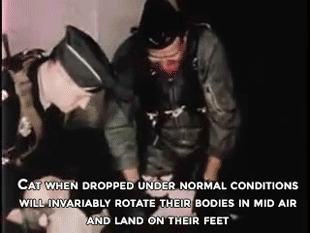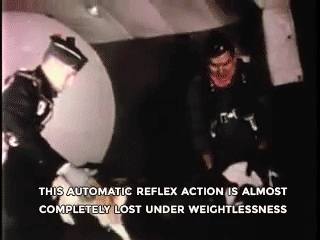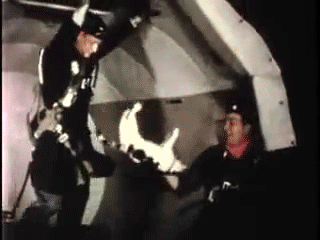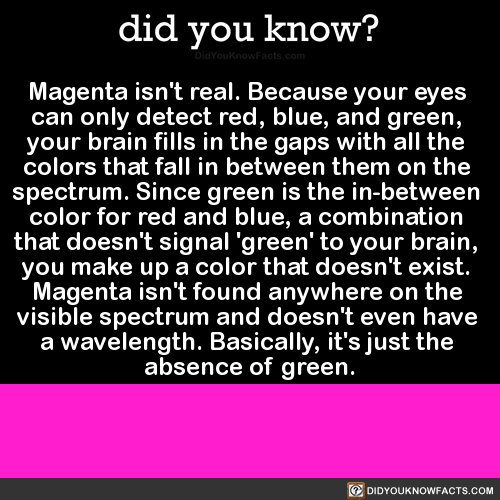I Find This Table Fairly Reliable.

I find this table fairly reliable.
Via SMBC
More Posts from Science-is-magical and Others
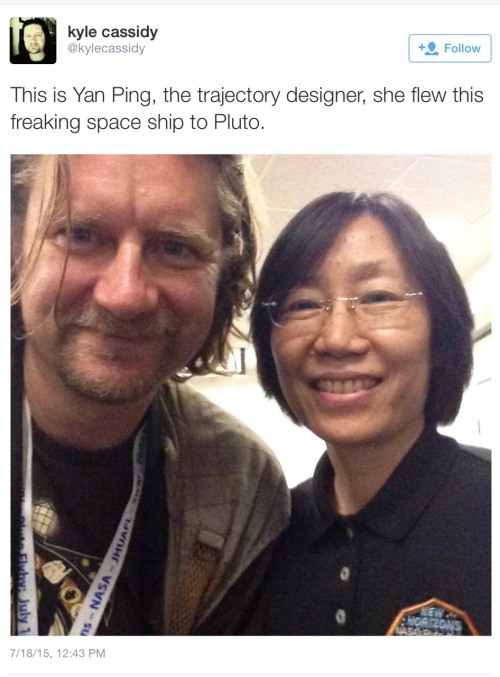

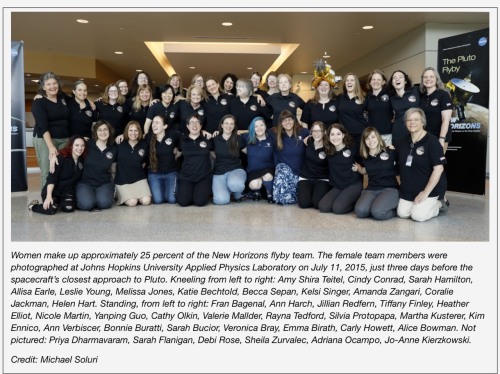
Women scientists made up 25% of the Pluto fly-by New Horizon team. Make sure you share this, because erasing women’s achievements in science and history is a tradition. Happens every day.
.
http://pluto.jhuapl.edu/News-Center/News-Article.php?page=20150712
The Hubble Space telescope just sent back a new photo of the Twin Jet Nebula. Here’s what it looked like in 1997:

And now …

Whoa. But wait, we also got an updated image of the merging galaxies NGC 6240. What it looked like in 2008:

And today:

Science, you’re the best. Oh, and the explanation behind those merging galaxies and their black holes is wild.

Contamination-seeking drones - IBM Patent 9447448.
Stay back and let the drones do the dirty work. Patent 9447448 makes cognitive drones able to inspect and decontaminate places so humans don’t have to. The drones’ on-board AI system can collect and analyze samples, so it can identify and clean up any bacteria or outbreak. Meanwhile you get to hang back, safely out of harm’s way.
This is just one of the record-breaking 8,000+ patents IBM received this year. Explore the latest IBM patents. →

It’s #InternationalKissingDay! Here’s some topical lipstick chemistry. More info/high-res image: http://wp.me/s4aPLT-lipstick
New technique captures the activity of an entire brain in a snapshot
When it comes to measuring brain activity, scientists have tools that can take a precise look at a small slice of the brain (less than one cubic millimeter), or a blurred look at a larger area. Now, researchers at The Rockefeller University have described a new technique that combines the best of both worlds—it captures a detailed snapshot of global activity in the mouse brain.

(Image caption: Sniff, sniff: This density map of the cerebral cortex of a mouse shows which neurons get activated when the animal explores a new environment. The lit up region at the center (white and yellow) represents neurons associated with the mouse’s whiskers)
“We wanted to develop a technique that would show you the level of activity at the precision of a single neuron, but at the scale of the whole brain,” says study author Nicolas Renier, a postdoctoral fellow in the lab of Marc Tessier-Lavigne, Carson Family Professor and head of the Laboratory of Brain Development and Repair, and president of Rockefeller University.
The new method, described in Cell, takes a picture of all the active neurons in the brain at a specific time. The mouse brain contains dozens of millions of neurons, and a typical image depicts the activity of approximately one million neurons, says Tessier-Lavigne. “The purpose of the technique is to accelerate our understanding of how the brain works.”
Making brains transparent
“Because of the nature of our technique, we cannot visualize live brain activity over time—we only see neurons that are active at the specific time we took the snapshot,” says Eliza Adams, a graduate student in Tessier-Lavigne’s lab and co-author of the study. “But what we gain in this trade-off is a comprehensive view of most neurons in the brain, and the ability to compare these active neuronal populations between snapshots in a robust and unbiased manner.”
Here’s how the tool works: The researchers expose a mouse to a situation that would provoke altered brain activity—such as taking an anti-psychotic drug, brushing whiskers against an object while exploring, and parenting a pup—then make the measurement after a pause. The pause is important, explains Renier, because the technique measures neuron activity indirectly, via the translation of neuronal genes into proteins, which takes about 30 minutes to occur.
The researchers then treat the brain to make it transparent—following an improved version of a protocol called iDISCO, developed by Zhuhao Wu, a postdoctoral associate in the Tessier-Lavigne lab—and visualize it using light-sheet microscopy, which takes the snapshot of all active neurons in 3-D.
To determine where an active neuron is located within the brain, Christoph Kirst, a fellow in Rockefeller’s Center for Studies in Physics and Biology, developed software to detect the active neurons and to automatically map the snapshot to a 3-D atlas of the mouse brain, generated by the Allen Brain Institute.
Although each snapshot of brain activity typically includes about one million active neurons, researchers can sift through that mass of data relatively quickly if they compare one snapshot to another snapshot, says Renier. By eliminating the neurons that are active in both images, researchers are left only those specific to each one, enabling them to home in on what is unique to each state.
Observing and testing how the brain works
The primary purpose of the tool, he adds, is to help researchers generate hypotheses about how the brain functions that then can be tested in other experiments. For instance, using their new techniques, the researchers, in collaboration with Catherine Dulac and other scientists at Harvard University, observed that when an adult mouse encounters a pup, a region of its brain known to be active during parenting—called the medial pre-optic nucleus, or MPO—lights up. But they also observed that, after the MPO area becomes activated, there is less activity in the cortical amygdala, an area that processes aversive responses, which they found to be directly connected to the MPO “parenting region.”
“Our hypothesis,” says Renier, “is that parenting neurons put the brake on activity in the fear region, which may suppress aversive responses the mice may have towards pups.” Indeed, mice that are being aggressive to pups tend to show more activity in the cortical amygdala.
To test this idea, the next step is to block the activity of this brain region to see if this reduces aggression in the mice, says Renier.
The technique also has broader implications than simply looking at what areas of the mouse brain are active in different situations, he adds. It could be used to map brain activity in response to any biological change, such as the spread of a drug or disease, or even to explore how the brain makes decisions. “You can use the same strategy to map anything you want in the mouse brain,” says Renier.

As Ars has reported previously, scientists have found that triclosan and other antimicrobial soaps have little benefit to consumers and may actually pose risks. These include bolstering antibiotic resistant microbes, giving opportunistic pathogens a leg up, and disrupting microbiomes. In its final ruling, issued Friday, the FDA seemed to agree. “Consumers may think antibacterial washes are more effective at preventing the spread of germs, but we have no scientific evidence that they are any better than plain soap and water,” Janet Woodcock, director of the FDA’s Center for Drug Evaluation and Research (CDER), said in a statement. “In fact, some data suggests that antibacterial ingredients may do more harm than good over the long-term.”
[…]
The ruling does not affect alcohol-based hand sanitizers or wipes, which the agency is reviewing separately. It also does not affect antiseptic products used in healthcare settings.

Machine Learning: An In-Depth, Non-Technical Guide
A good introductory text in five parts:
Overview, goals, learning types, and algorithms
Data selection, preparation, and modeling
Model evaluation, validation, complexity, and improvement
Model performance and error analysis
Unsupervised learning, related fields, and machine learning in practice
By Alex Castrounis - {InnoArchiTech}

Drone with grabbing claw arms can lift 44 pounds
Prodrone’s latest creation could lift a four-year-old child, and uses its 5-axis metal claws to perch on fences like a bird.
-
 emmuhleens liked this · 2 years ago
emmuhleens liked this · 2 years ago -
 pleasurehunter2000 liked this · 2 years ago
pleasurehunter2000 liked this · 2 years ago -
 what-is-the-eidos-of-a-blog reblogged this · 3 years ago
what-is-the-eidos-of-a-blog reblogged this · 3 years ago -
 overthinkingsackofblood reblogged this · 3 years ago
overthinkingsackofblood reblogged this · 3 years ago -
 overthinkingsackofblood liked this · 3 years ago
overthinkingsackofblood liked this · 3 years ago -
 claire-starsword liked this · 4 years ago
claire-starsword liked this · 4 years ago -
 houfukuseisaku reblogged this · 4 years ago
houfukuseisaku reblogged this · 4 years ago -
 miramisaki liked this · 4 years ago
miramisaki liked this · 4 years ago -
 brokentoothonhip reblogged this · 4 years ago
brokentoothonhip reblogged this · 4 years ago -
 mrrodd liked this · 5 years ago
mrrodd liked this · 5 years ago -
 anglework reblogged this · 5 years ago
anglework reblogged this · 5 years ago -
 haronson reblogged this · 5 years ago
haronson reblogged this · 5 years ago -
 haronson liked this · 5 years ago
haronson liked this · 5 years ago -
 vontage116 liked this · 5 years ago
vontage116 liked this · 5 years ago -
 vanillanila reblogged this · 5 years ago
vanillanila reblogged this · 5 years ago -
 ethniically-ambiiguous liked this · 5 years ago
ethniically-ambiiguous liked this · 5 years ago -
 gwenmcgregor liked this · 5 years ago
gwenmcgregor liked this · 5 years ago -
 ddowns8 reblogged this · 5 years ago
ddowns8 reblogged this · 5 years ago -
 pleonasmic-tautology reblogged this · 5 years ago
pleonasmic-tautology reblogged this · 5 years ago -
 pleonasmic-tautology liked this · 5 years ago
pleonasmic-tautology liked this · 5 years ago -
 valentines-gay liked this · 6 years ago
valentines-gay liked this · 6 years ago -
 the-sloth-king liked this · 6 years ago
the-sloth-king liked this · 6 years ago -
 bloboloblob liked this · 6 years ago
bloboloblob liked this · 6 years ago -
 allmercyrun liked this · 6 years ago
allmercyrun liked this · 6 years ago -
 vmlinuz-lts reblogged this · 6 years ago
vmlinuz-lts reblogged this · 6 years ago -
 vmlinuz-lts liked this · 6 years ago
vmlinuz-lts liked this · 6 years ago -
 insufferable-astronaut reblogged this · 6 years ago
insufferable-astronaut reblogged this · 6 years ago -
 maidensfancy liked this · 6 years ago
maidensfancy liked this · 6 years ago -
 stevesnightmares reblogged this · 6 years ago
stevesnightmares reblogged this · 6 years ago -
 stevesnightmares liked this · 6 years ago
stevesnightmares liked this · 6 years ago -
 dancingbookwormtimelord reblogged this · 6 years ago
dancingbookwormtimelord reblogged this · 6 years ago
